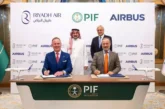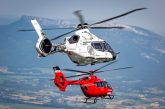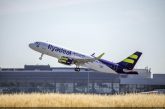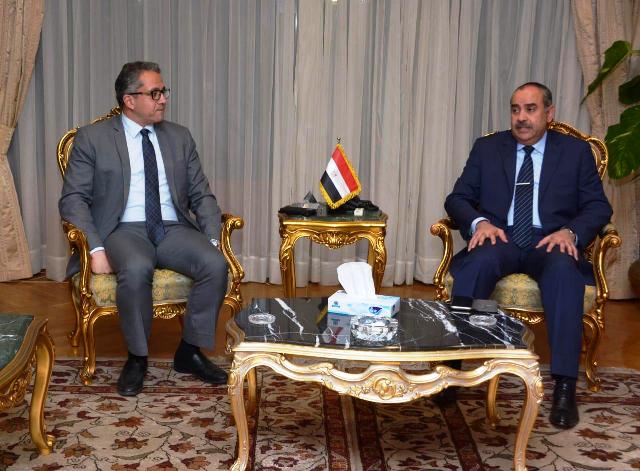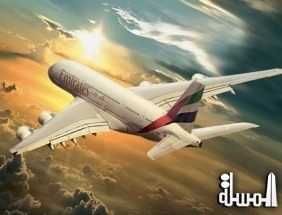
Aviation to contribute USD 53.1 billion to Dubai s economy
Almasalla, ATP News- Emirates airline, Dubai Airports and the aviation sector as a whole contributed USD 26.7 billion to the Dubai economy in 2013, which was almost 27%* of Dubai s GDP and supported a total of 416,500 jobs accounting for 21% of the emirates’ total employment. These figures were based on the latest report “Quantifying the Economic Impact of Aviation in Dubai” conducted by global research firm, Oxford Economics, as a follow-up to a 2011 study done by the same firm.
The objective of the report was to quantify the economic impact of the aviation sector and its subsequent Dubai-based supply chain. In addition, the report explains the benefits that aviation brought to Dubai’s economy in 2013 in terms of gross value added (GVA)** and employment, and provides forecasts for the sector and its knock-on effects in 2020 and 2030.
.jpg)
Core impact of aviation: It is estimated that the aviation sector, including the Emirates Group, Dubai Airports, and other aviation businesses such as airlines flying into Dubai, regulatory authorities and Dubai Duty Free, had a core impact of USD 16.5 billion GVA in 2013. This includes direct, indirect and induced contributions and is equal to 16.5% of Dubai’s GDP, supporting over 259,000 Dubai based jobs.
Moreover, for every USD 100 of activity in the aviation sector, a further USD 72 is added in other sectors of the local economy from supply chain connections and expenditures. For every 100 jobs created in aviation, an additional 116 jobs are created elsewhere in Dubai.
Tourism benefits: Aviation has proved to be an indispensable catalyst for the growth of Dubai’s tourism industry. Tourism and travel activities in 2013 had an economic impact of USD 10.2 billion GVA supporting a further 157,100 jobs. In 2013, Dubai welcomed nearly 10 million non-UAE visitors who spent USD 13 billion, accounting for around 1% of foreign visitor spend globally that year. The success of Dubai as a destination has been a public and private effort to invest in world-class aviation and tourism infrastructure to support the influx of visitors. The results have paid dividends and Dubai currently captures a 0.4% share of the world’s business and tourism traffic, double the share it had in 2000.
.jpg)
Connectivity: One of Dubai’s greatest assets is its enhanced connectivity. In 2013, Oxford estimated that passengers could connect from Dubai to 25 cities (or 81% of world cities) with populations of over 10 million people. Overall, Dubai had direct passenger flight connections to 149 cities with populations of over 1 million people, creating potential export markets of over 916 million people, or 13% of the world’s population. Cargo tonnage between 1990-2013 handled in Dubai has grown on average of 13.5% per year, compared to global average trade volumes of 5.6% per year.
The passenger and cargo connectivity provided from Dubai has positively impacted Foreign Direct Investment (FDI) and trade. It also has provided greater access to foreign markets, encouraging exports, and increasing competition in the local economy, benefiting consumers.
Economic benefits in 2020 and 2030
Between 2014 and 2020, the contribution of the aviation sector to Dubai’s economy is expected to grow at a faster rate than the economy as a whole, on the back of strong growth in international passenger traffic and cargo. The sector’s airline and airport capacity continues to expand to accommodate for growing demand.
Using industry growth forecasts and modelling projections based on current expansion plans for Dubai International (DXB) and Al Maktoum International at Dubai World Central (DWC), it is estimated that the overall economic impact of both aviation and tourism related activities will rise to a robust USD 53.1 billion in 2020. This will be equivalent to 37.5% of Dubai’s GDP, supporting over 754,500 Dubai-based jobs.
.jpg)
By 2020, it is estimated that Emirates will fly 70 million passengers, and the airline and its partners are already progressing plans for the right infrastructure to be in place to support and capitalise on passenger growth. The same year, Dubai expects to welcome over 20 million visitors for Expo 2020. Projects to support the six month mega-event in Dubai are already underway. This includes a sizable increase in airport capacity which encompasses expansion of airspace, airfield, stands and terminal areas to allow Dubai International to accommodate 60% more aircraft stands by 2015, and service 90 million passengers by 2018. By 2020, Dubai International is estimated to receive 126.5 million passengers, almost 30% higher than its original 2010 assessments.
.jpg)
*The Oxford Economics Report only quantifies the direct, indirect, induced and tourism benefits, and do not attempt to put a value on ‘connectivity benefits’ as in the 2011 report Explaining Dubai’s Aviation Model. For comparison, the direct, indirect, induced and tourism benefits in the 2011 report totalled USD 19.6 billion, or 24% of GDP.
**Gross Value Added (GVA) is defined as the contribution an institution, company or industry makes to Gross Domestic Product (GDP). The sum of GVA contributions of all Dubai organizations is equal to Dubai GDP. In simple terms GVA is understood as turnover minus the cost of bought-in goods and services used in the production process.



